
Fishing at Creek Locks, N.Y. Postmark Rosendale, N.Y. 1908
Recasting Recreation
Spring 2017
To paraphrase a mantra of tourism and business developers throughout the world: Happy residents draw visitors. And, I add, businesses. It makes good sense. Residents who like where they live and work usually work and live in very nice places. Who wouldn’t want to visit?

Summer delight 1953. Swimming at Zanucci’s Pool, which was located at the intersection of S. Eltings Corners Road and Route 299, now site of Lowe’s
It explains why Ulster County has always been a destination. Ulster has its share of theater, shopping, higher education, accommodations, excellent food, sporting pastimes, vacation venues, and myriad other things that proffer a high quality of life. Fortunately, Ulster has even more.
Its vistas enhance all activities. Its scenery re-creates one’s spirit and one’s health while providing fresh perspectives. It breathes new life into tired thinking.
The traveler is not the only beneficiary. Visitors and tourists create jobs, bring in purchasing power, and encourage residents to “spruce up” the place, start new businesses, and conceive of new services. Competition rears its beautiful head especially high when it comes to tourism.
The early photos and postcards illustrating this story show us everything we still cherish today–our human need for immersion in “wild” nature has not changed. All the better to accomplish something in addition to spiritual renewal– catch a fish, improve your cardiovascular fitness, get to know your loved ones better.

Ulster County has long been awash in places to stay, accommodating every wallet, palate, and potential. Visitors, in turn, have brought financial benefits to the local population, especially women of a century ago.
It is interesting to note the number of early boarding houses and other accommodations once run by women. “Proprietress” was a growing route to survival if not financial independence. Among large city newspaper advertisements in the early 1900s, we find several women entrepreneurs operating across Ulster County: Plattekill, Mrs. Rachael Anson’s boarding house; Highland, Vineyard Avenue, Mrs. Bloomer’s Lewiston Lake House, today a private residence still occupied by family members; Rifton, Mrs. Yevonne Cutler’s children’s camp; and dozens of others with a few spare bedrooms in their homes. Many other women ran actual resorts with landscaped grounds, swimming pools, restaurants, and bocce, tennis and badmintons courts.

One of many ads in the Brooklyn Eagle, June 1929 enticing visitors to Ulster County. Many offering accommodations are, like Mrs. Cutler above, female.
Early ads for rentals often discussed the food offered, the surrounding sporting opportunities, amenities, and, very infrequently, “ethnic preferences.” That reference and the formality of the language are about the only differences between a brochure of 100 years ago and any advertising by today’s inns or B&Bs.
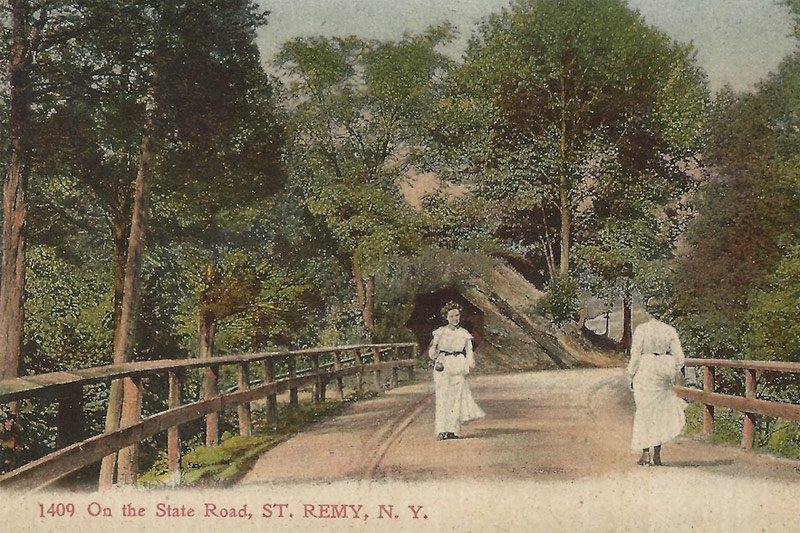
On the State Road, ST. REMY, N.Y.
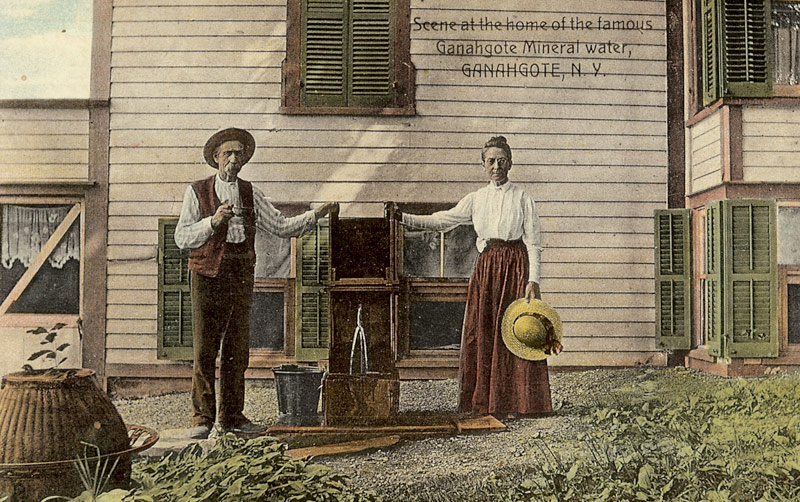
Scene at the home of the famous Ganaghote Mineral water, Ganaghote, N.Y. (Gardiner, NY), circa 1915.
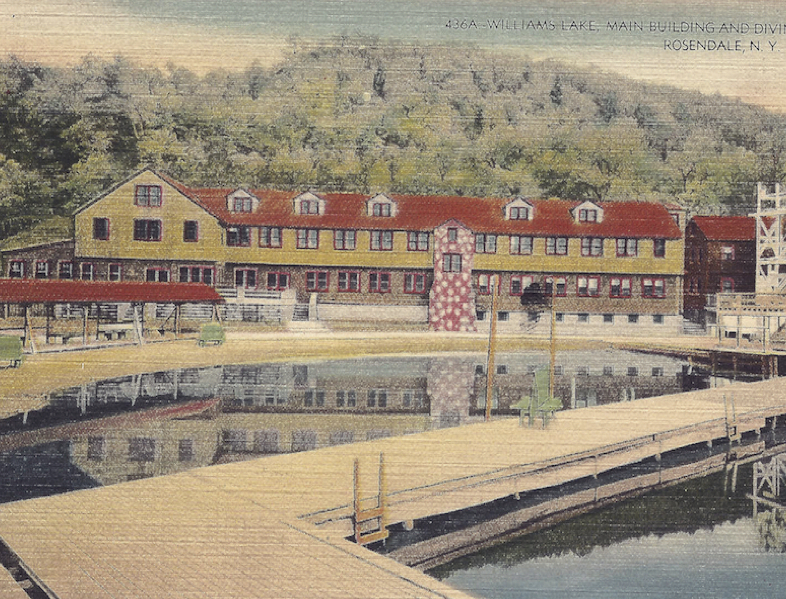
Williams Lake, Main Building and Diving Tower, Rosendale, N.Y. postmarked 1944, buildings shown here burned, replacements were razed in 2016 to make way for the site’s next use.
Wealthier relaxation-seekers made their way to Lake Minnewaska or Mohonk, arriving via day steamer on the Hudson, trains through the Wallkill and Rondout Valleys, trolleys and stagecoaches. If stopping in New Paltz to await the final leg up the mountain, travelers could slake their thirst and shake off the dust at places such as The Casino, now P&G’s on Main Street.
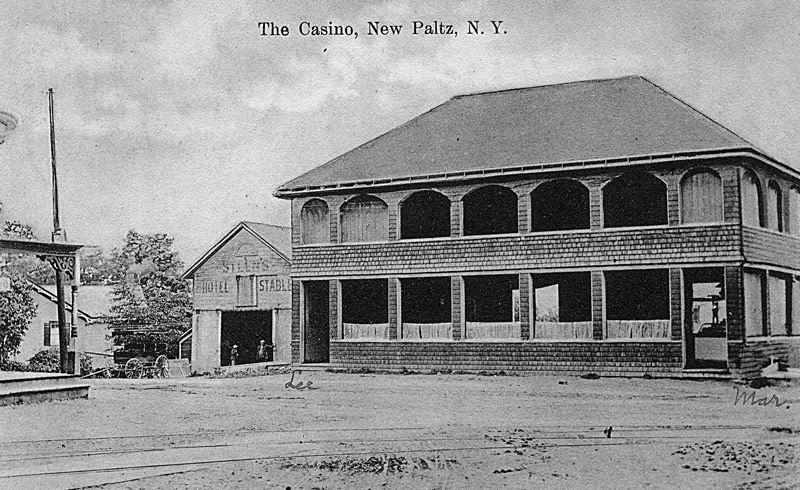
“The Casino, New Paltz, N.Y.” This circa 1906 postcard shows the early Casino and stables. Across Main Street was a large hotel. Between, on Main Street, ran the Highland to New Paltz trolley, the only “inter-city” trolley in Ulster County. Two blocks west of The Casnio was the Tamney Hotel on Main and Wurts Avenue.
The Casino opened in June 1900. It had an open-air second floor for patrons to dance, enjoy the Shawangunk Mountain view, and watch the trolley and wagon traffic on Main and North Front streets. Unlike casinos today, it did not have gambling, but it did have ice cream and a sophisticated ambiance with potted palms and an indoor waterfall.
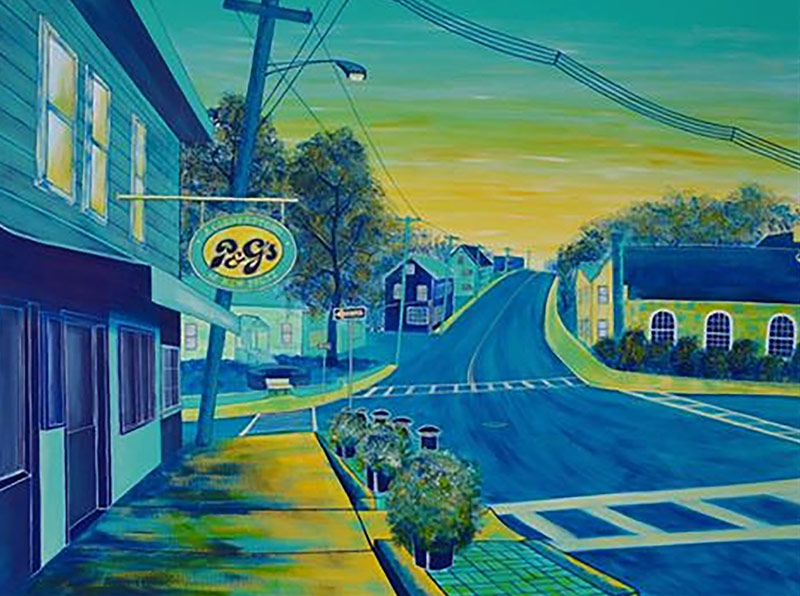
Painting: P&G’s intersection by Elena Yess, 2016
The Casino building has housed some of the longest running establishments in the county, each eager to accommodate the needs of residents and visitors. The Casino’s spirit has lasted through many iterations, including the Blue Crane Inn, to the joy of many during the jazz and big band eras.
Another early hot spot was the Rosendale Casino on Main Street, Rosendale. Because the cement mines were in full production in the 1800s, there were many workers with plenty of money to be re-earned by a smart property owner. And of course, if it was bringing in the locals, could the tourists be far behind?
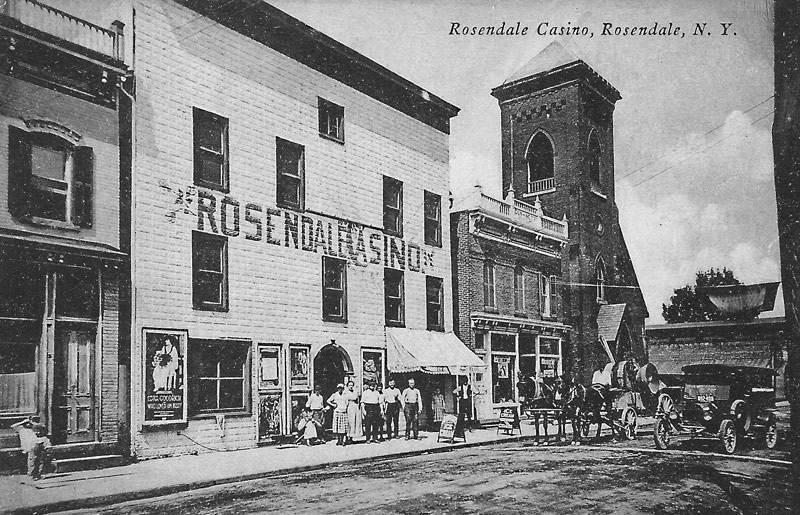
“Rosendale Casino, Rosendale, N.Y.” This early postcard seems to show a movie poster, or perhaps it was for a live program. Most of the Main Street of Rosendale remains intact today. Rosendale is the site of the popular Pickle Festival and Frozendale. Rosendale in the late 1800s and early 1900s had a population of about five thousand because of the many cement operations surrounding it.
The early influx of area visitors, who hailed mostly from cities, were happy to ride the Hudson River day steamers, gawk out the train and trolley windows at the villages and farms, stroll the back roads, partake of the fine farm fare, and “take the waters.” They might also go to the movies, a dance hall, or to one of the many large amusement areas, such as Kingston Point Park.
Most tourists came via the usual conveyances, trains, day liners, horse and wagon, cars, and buses. Yet, an often overlooked transportation during the early years were the packet boats on the D&H canal. The canal’s original purpose was to transport coal from Pennsylvania to New York and Albany. The canal ran from Honesdale, PA, to Eddyville (I suspect named for the Eddy family as I recently came across their cemetery) and the Rondout Creek where the coal was loaded onto barges for plying the Hudson River.
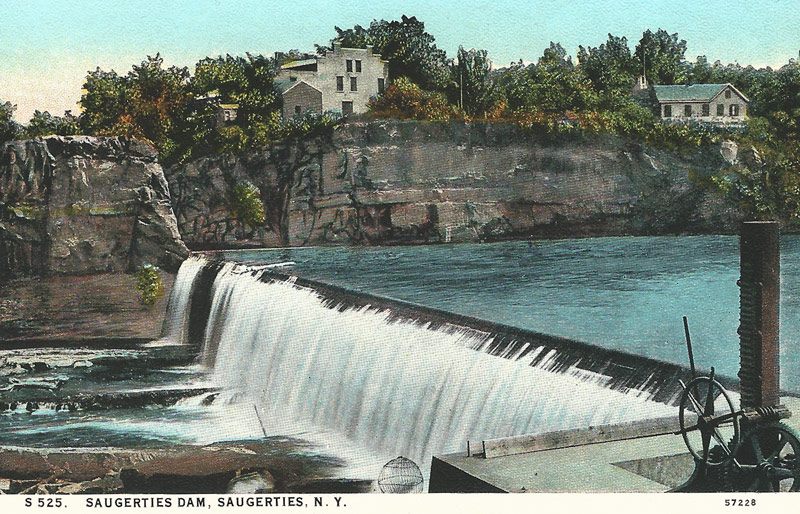
“Saugerties dam, Saugerties, N.Y.” Card circa 1930
The packet boats were often luxurious and could each transport a hundred people, noted Matthew M. Osterberg in his Images of America book, The Delaware & Hudson Canal and The Gravity Railroad. Though packet boats did not last long in the scheme of things, traveling at the speed-of-mule gave travelers an intimate sense of the beauty along the canal’s path.
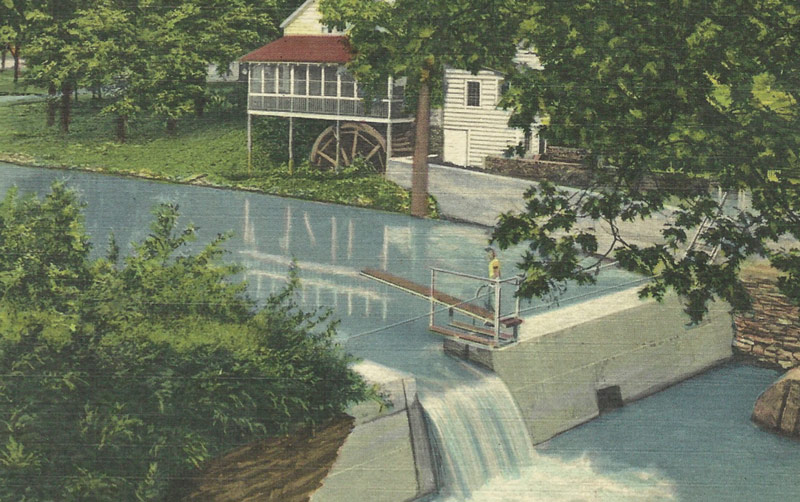
“Woodstock, New York. Woodstock Country Club. This was a grist Mill from 1788 to 1925. Also run as a Carding Mill, 1836. It is now the Woodstock Country Club” Card circa 1930.

“Awosting Falls, Lake Minnewaska, N.Y.” Card circa 1940.
During this period, illness was another reason visitors came to Ulster County. The prescription for tuberculosis (TB) was rest, fresh air, and reduced stress. Except for exercise, that prescription was exactly why the healthy sojourned here. Sanitariums sprung up and flourished. Ulster County citizens opened the first major TB hospital in Kingston; it was considered a model for other county infirmaries. A December 20, 1939 Kingston Daily Freeman article reported that in 1909 a committee in Ulster County began work to establish the TB hospital. “Four thousand dollars were contributed and the first tuberculosis hospital in New York state was established,” the Freeman stated. “Our Ulster county sanitorium today enjoys the reputation of being one of the finest in the state.” Many other rest-cure homes began in Ulster County. Dr. Sahler’s Sanitorium in Kingston did a lively business in caring for suffers of TB and other debilitating afflictions.
Because these conditions often meant confinement for extended periods of time, the victims’ families would often travel here to visit. This was another way Ulster County’s charms were broadcast.

“Bridge and Mills at Lake Katrine, N.Y.” Card postmarked January 16, 1911.
Ulster’s abundance of water has always been a lure for tourists. Water flowing, better yet, falling–the sound, the sight, the sheer power–draws us and keeps us mesmerized. The images on this page show water as the focus of early postcards: sometimes bridged, sometimes dammed, sometimes powerful, often wild. But always refreshing and healing to the flesh and the spirit.
Welcome to Ulster County.
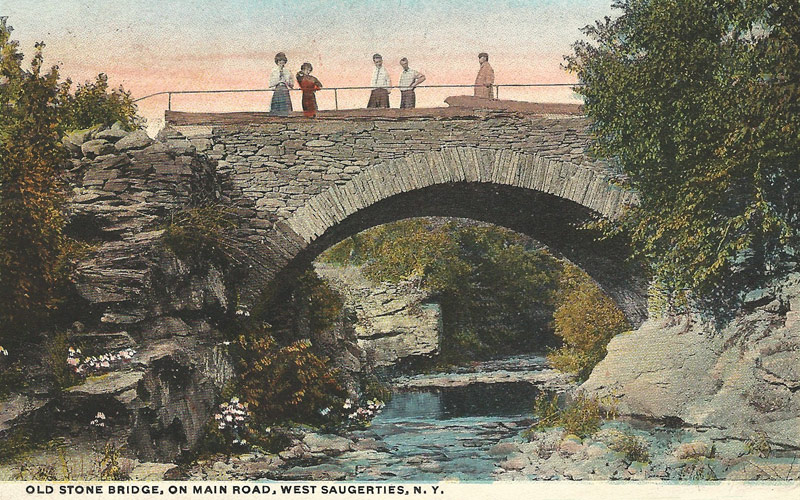
“Old Stone Bridge, on Main Road, West Saugerties, N.Y.” Card postmarked 1922.
All images are from the collection of the author, Vivian Yess Wadlin.
